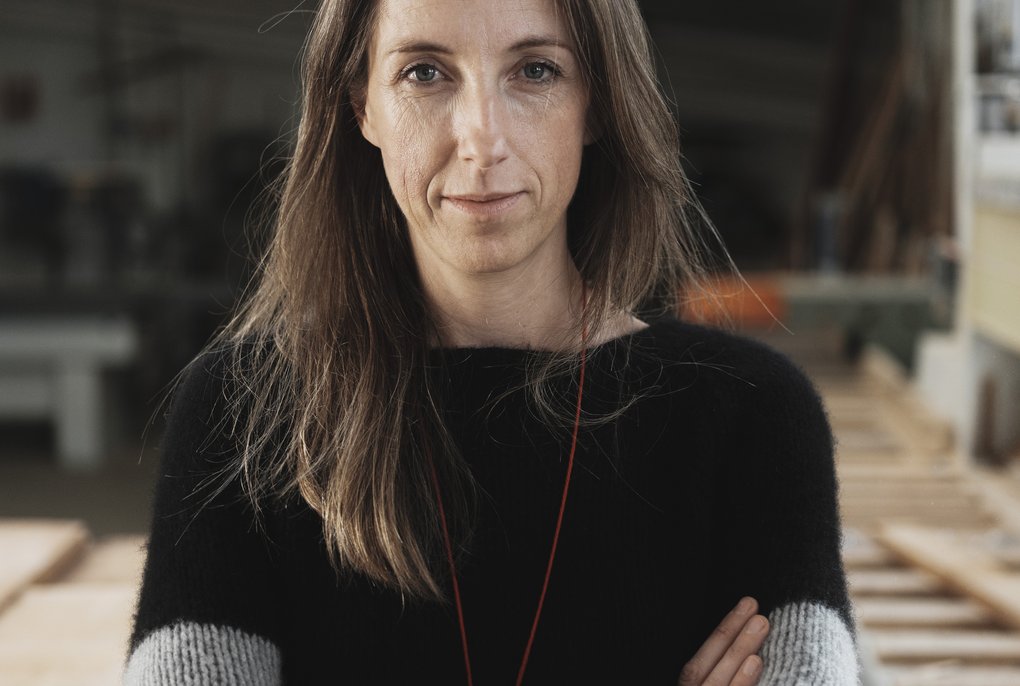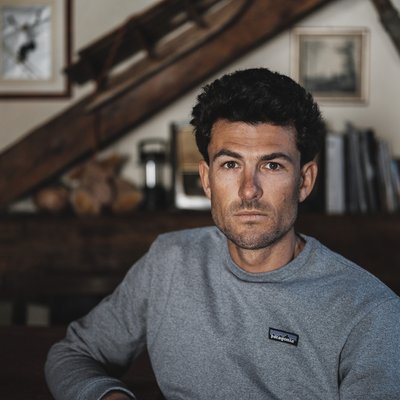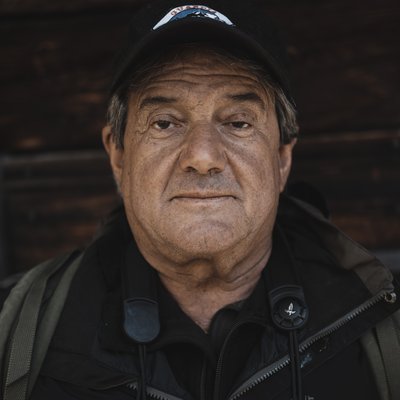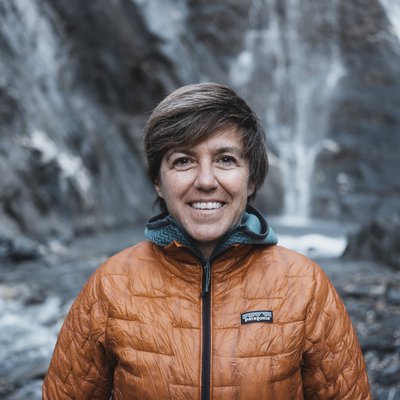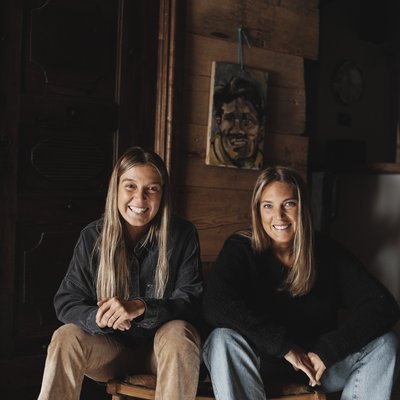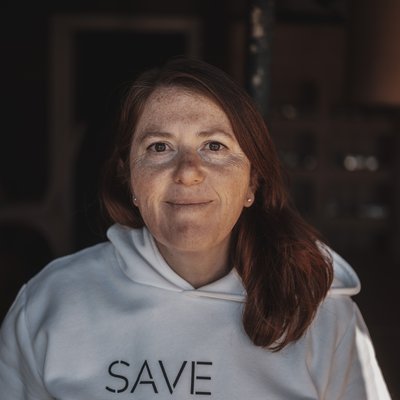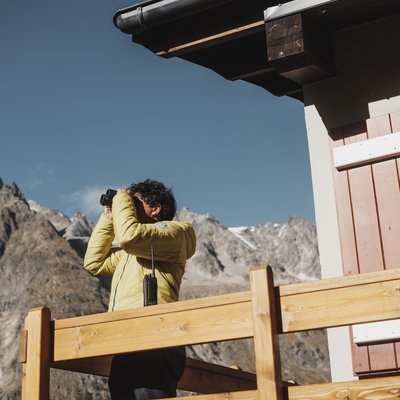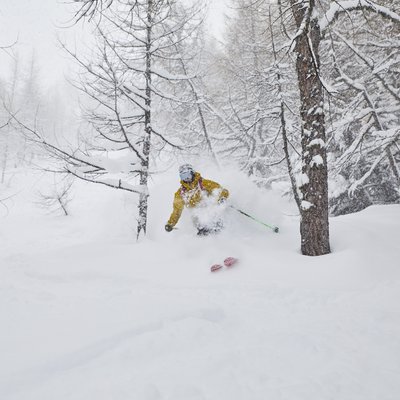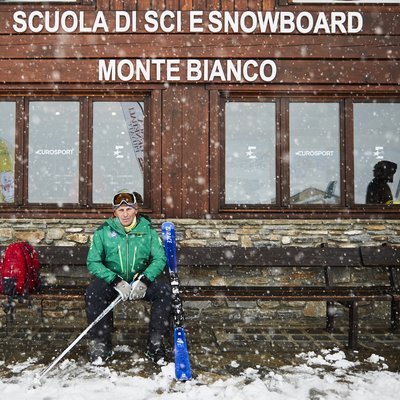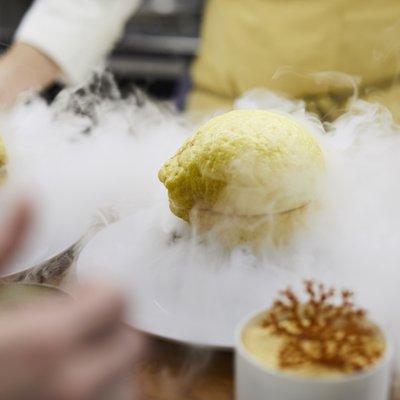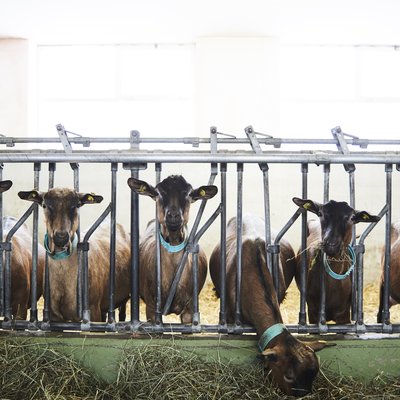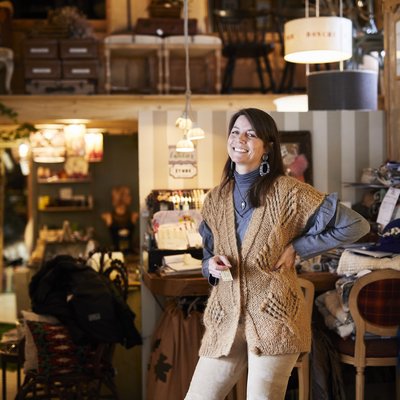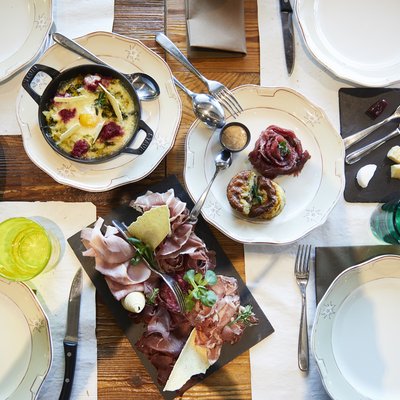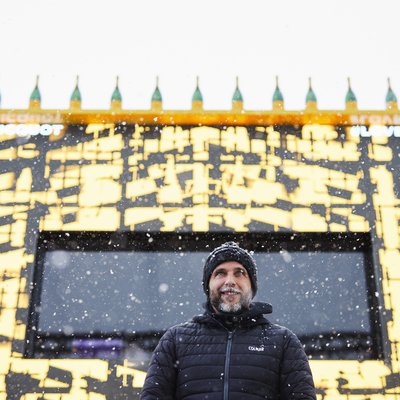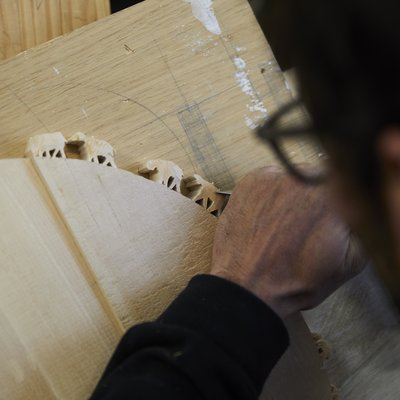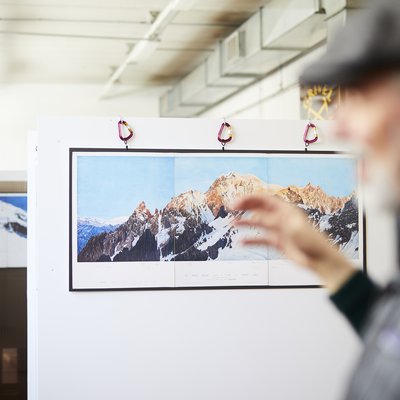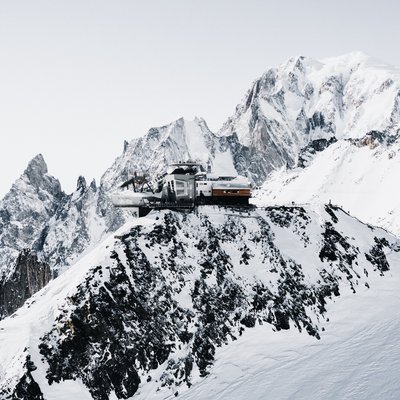Architect Of Wood
Ivette Clavel, 44, is an unusual architect: She works with wood, never with concrete. That’s why she comes up with plans for furniture, not buildings. We talked to her about working in small spaces and how to interpret clients’ dreams.
We meet Ivette Clavel in her Courmayeur studio. There’s the smell of freshly cut wood, yellow sawdust on the floor, a circular saw screeching in the background. This is where ideas are not only born but also put into practice.
Ivette is an architect who likes to work both with her head and her hands. This is where she is at ease, moving happily between the heavy machinery in the workshop, explaining in detail the considerations of her work. She wears colourful striped socks, a grey woollen sweater and a red string with a white stone around her neck. The stone is from Mont Blanc, the mountain that has shaped her family's history – and her own.
Dear Ivette, in an architect’s office we normally see people draw plans and build models. In your studio, they plan, saw and mill. Is this a carpenter’s workshop or an architect's office?
Right now we are in the workshop, the place where we make furniture and interiors. The design and planning office is on the floor above us. We are not an architectural office in the traditional sense.
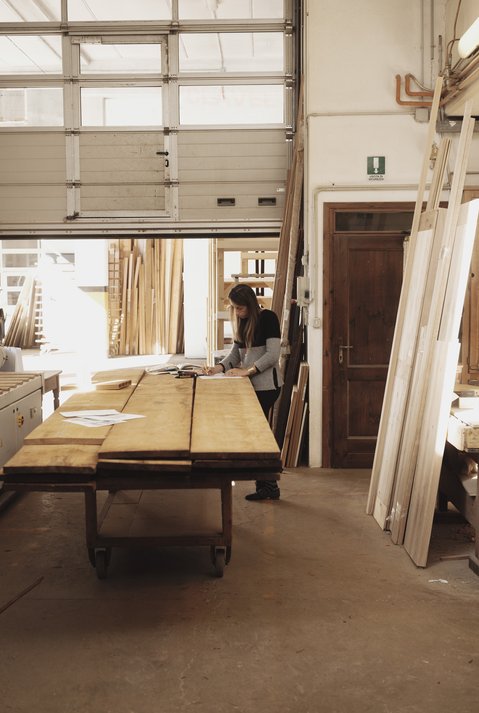

So you don't design buildings but specialise in the production of wooden furniture?
We produce custom-made furniture and interiors. Our work is exclusive, each of our pieces is one of a kind. My father, a carpenter and mountain guide, founded this company many years ago. Back then it was a small carpentry shop: a circular saw, two employees and a few workbenches. Today there are more than 20 people working here, and twice as many machines.
And after graduating university, you took over the business?
Together with my brother, yes, who is also a mountain guide and carpenter. I studied in Milan and actually wanted to work abroad first. But then my father called, asking me if I could help out around here for a few months. That must have been around 18 years ago...
And you're still here.
And I wouldn’t want it any other way. I feel very connected to Courmayeur. My family has lived here in the Aosta Valley for many generations, they have all worked in the mountains and with wood. Architects usually design homes or buildings, so they mostly work with concrete. I decided to continue my family's work, I love wood as much as they do. I am an architect of wood.
So one could say that your work is more about the inner life than the outer shell?
I create something in my head that doesn't yet exist. I want it to be beautiful and to fit into its environment harmoniously. In addition, I want it to meet my customers’ ideas and expectations. In order to achieve that I have to know who these people are and how they live. Only then does that magic come about, only then can we create exactly what our customers have perhaps been dreaming of for a long time.
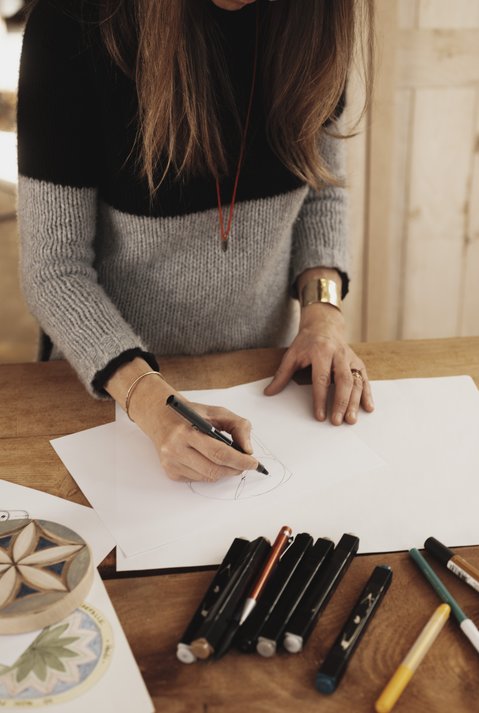

So you are the architect of wood who also interprets dreams?
If my customers want to tell me about their dreams, yes. But it's not just about recognising the aesthetics in their dreams, it’s also about integrating functionality into the design: My clients don't live in huge penthouses or mansions, their houses are stylish, but small. In this respect, the most beautiful kitchen is of little use if it doesn’t provide room to cook in.
That would be a shattered dream.
Which hasn't happened yet. It is, however, not always easy to find out what others are looking for. If you have a lot of space, it is easier. Working in a small space, on the other hand, is much more exciting.
Is that why you came up with the idea of the wooden brick?
I had the idea over two years ago, I was looking for something new, an outlet for my creativity. When I told a friend about it – he is an engineer and builds houses – he was hooked from the get-go. The wooden brick is the result of our first cooperation: It connects the outside with the inside. In this respect, it also has symbolical value. The project is called "Le Bois du Mont Blanc" (editor's note: The wood of Mont Blanc).
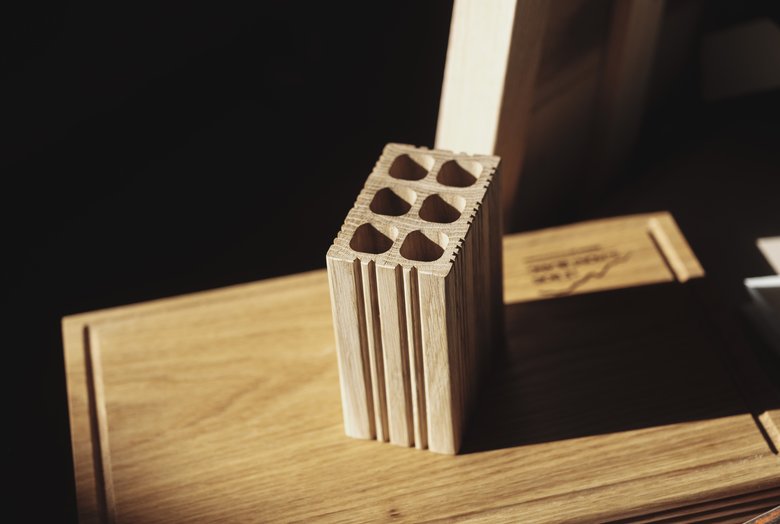
Are you two already working on other projects?
We have a few things in mind, but it's still too early to talk about them. What I can say is that the "Rosonne", a symmetrical element in the shape of a rose, which is often used in the Aosta Valley, will play a leading role.
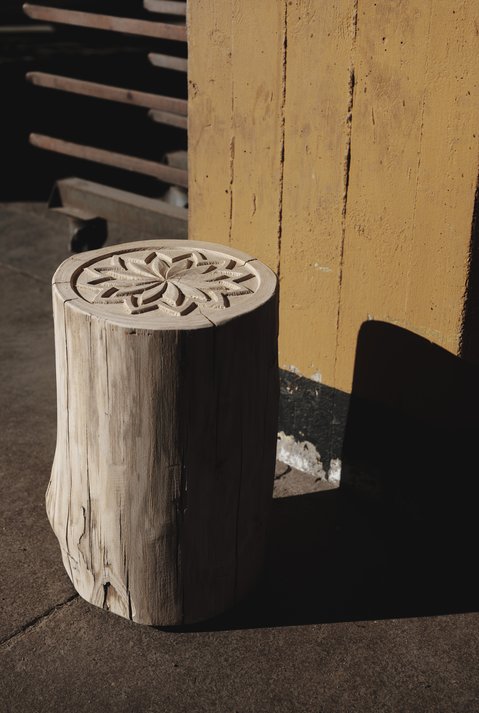

And what decorative role does your red necklace play?
My husband gave it to me. He is also a mountain guide, but not from here, he’s from the United States. We met while skiing in Chamonix. The stone on the necklace comes from inside the glacier, from a very special area where we first went skiing together. This stone represents our love and what we both live for.
Text: Robert Maruna // friendship.is
Photos: Ian Ehm // friendship.is
April 20, 2022

